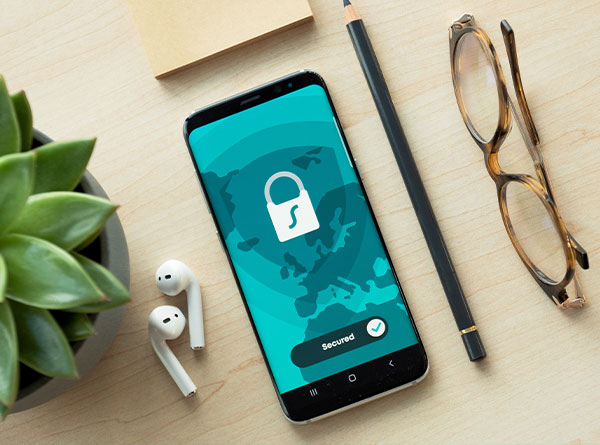
5 ways to improve your corporate cybersecurity
Cybersecurity is an unfortunately necessary aspect to manage for any modern business.
The increasing emphasis on e-commerce means that almost every business has a substantial online presence.
What’s more, the threat of cybersecurity attacks has risen substantially, as cybercriminals become increasingly sophisticated in their methods. This makes it imperative for business owners to put concrete measures in place to safeguard their organisations from these threats to save themselves from the repercussions of cybercrime.
Unfortunately, many companies fail to take the threat of cyber-attacks seriously. A possible reason for this is that digital crimes don’t demonstrate the same immediate risk as ‘real world’ ones. The prospect of a masked thief breaking into your premises, stealing several computers (along with the sensitive information stored on them), and destroying the rest of the property from the inside out is very real. You can imagine it, and you know how to minimise the chances of it happening.
The good news is that although you can’t erect security cameras and an electric gate to your online presence, there are several ways to protect yourself from cybercrime.
Here are five ways to improve your corporate cybersecurity:
1. Use IAM tools to improve your cloud security
Let’s get the jargon out of the way. IAM stands for Identity and Access Management.
Many businesses, like ours, use cloud storage services, like Dropbox and Google Drive.
It can be easy to be lulled into a false sense of security with cloud solutions. The reason for this is that they are incredibly safe (when compared to alternatives). It is hard to directly hack a cloud storage account, for example, because the firewalls are so thick.
This laissez-faire approach is a mistake, though, because cloud accounts can still be breached.
Access to a cloud account still must be assigned to someone, and there is no reason why their individual security settings can’t be tampered with. Managing who has access to which accounts or data is difficult, which is why tools for identity access management are so crucial. There are many IAM tools available in the market, such as Okta, OneLogin, and Microsoft Azure Active Directory.
IAM helps businesses manage who has access to their data and applications, allowing them to control who can access their data, what they can do with it, and when they can access it. These tools are crucial for managing access to cloud accounts and data, which can be difficult to manage otherwise. They also help keep data safe yet instantly available and prevent the need to save files to individual devices.
The more visibility you have over your cloud solutions, the more secure your IT estate will be.
2. Store your sensitive data securely
Sensitive data is target number one for cybercriminals, so it is vitally important that you store it securely.
This data could be information about your customers, employees, confidential business plans or blueprints, passwords, financial information or anything else that is valuable to a hacker.
Data storage has improved massively in recent years, as more businesses start to store their information in secure cloud accounts rather than leaving it vulnerable in filing cabinets in their offices.
Not only does physical storage pose a risk for theft, but it could be destroyed by a fire or a flood.
A common alternative to this is to store information on particular devices, but this is a flawed approach too. Devices can be stolen, corrupted or mislaid, which leaves your data exposed or lost forever.
To overcome these problems, you should consider keeping your information in cloud storage. This is because cloud accounts are stored in a digital database, making them accessible to you from anywhere in the world on any device.
Cloud-stored data is secure because the firewalls that protect it are incredibly thick (if not impenetrable), and many accounts are kept behind two-factor authorisation.
3. Limit access to valuable information
One of the most common threats to sensitive data is posed by those who have access to the account.
This makes logical sense, but it can be disconcerting when these people are your trusted employees. The simple truth is that many data breaches are accidents – or at least they start out like that. Your employees may accidentally leave their laptop open on a train carriage or lose a phone on the seat of a taxicab. If these devices have full access to sensitive information, then your business could be left incredibly vulnerable.
Similarly, one of your staff members could be a victim of a phishing scam, which tricks people into handing over access to private accounts or other important information.
All of this means that you need to save your employees from themselves. Having access for any longer than is necessary or granting unnecessarily high levels of security clearance only increases the odds of a cyber-attack or a simple mistake from happening.
Therefore, keep access to these accounts close to your chest.
4. Have a working understanding of potential cybersecurity threats
You can’t protect yourself from cybersecurity threats without knowing what those threats are. Therefore, you should educate yourself on the most common threats, how to prevent them from happening to you, and why they are successful quite so often.
Like any form of scam, cyber criminals prey on the ignorance of their victims, many of whom wouldn’t recognise a cyber-attack if they saw one. Despite what movies may depict, many cyber scams are deliberately low-key, posing as legitimate entities in order to dupe people into building trust.
A common example of this is a phishing scam, which sends an email or direct message to a list of people, posing as a trusted third party.
This might include members of the victim’s friends or family, a company they often interact with, or a reputable organisation such as the government, an insurance company or a bank.
5. Educate your staff on cybersecurity best practices
Your staff pose arguably your greatest security threat. This is not necessarily their fault, but there are good odds that at least one of them will be targeted by a cyber scammer, lose a company device or accidentally leak valuable information.
Therefore, you should educate your team on cybersecurity best practices – such as how to create strong passwords, what common cyber threats typically look like, and how to secure their devices.


